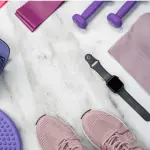People often think that photography is all about using the right gear, being in the right place, and having the most skill, but that isn’t always true. While it does pay to have excellent equipment that can allow you to accomplish any shoot, or be in the right place and the right time, and obviously be experienced, sometimes the best weapon in your arsenal is good editing.
The Adobe Lightroom editing program has been one of the main go-to’s for many photographers because of how easy it is to use but how much power it packs in features. Using Lightroom is a way to achieve your photography goals without needing expensive gear, so here are some of the most useful things to know to help maximize your photography potential.
Learn How to Use Presets
Lightroom presets are something of a cheat because a lot of the work has been done for you, but there’s no denying how useful they can be. Presets are available from many photographers, both pro and amateur, and if you check out the ones at parkerphotographic.com/1000-free-lightroom-presets/, you can see how they can help you in really easy ways. You simply need to download them and add them to your Lightroom library and it will sort them into the presets section, giving you unlimited freedom to make your photos look incredible with ease.
Understanding the Histogram
The histogram is something that can confuse beginners and many intermediate photographers or editors still don’t know how to use it, so it’s high time you get brushed up on how to read it. The histogram is that little graph/chart in the top right-hand corner and it helps tell you about range tones in any given image. From left to right are shadows, mid-tones, and highlights, which represent the three ranges of your images. You want to make sure that you aren’t clipping detail off, which is shown by the histogram brushing both edges of the chart. Understanding how to use the histogram will help your images retain quality in their tonal range.
Using the Tone Curve
The tone curve is another useful tool that uses a chart/graph depiction to show you how to manage your photo adjustments. It is not the same as the histogram and the tone curve allows you to adjust things like contrast and color adjustments. It uses the RBG (red, green blue) channel to help you make adjustments on the slider. You can add points to adjust each one as well with the dropdown menus. Using the tone curve is a good way to make pinpoint accurate changes to your images.
Knowing How to Correct ISO Noise
Speaking of pinpoint, you want to learn how to use the ISO noise correction tool, which is often just called the noise correction tool. High ISO can produce a lot of grain on your images, and it may not be noticeable all the time, it will be on blacks and other dark colors, especially when you are shooting night photography. Cameras do a decent job of controlling it but you still want some help from your editing software too. Being able to completely erase noise or correct it in specific areas is a good way to make sure your photos aren’t filled with unnecessary grain or luminance.
Using Local Adjustments
Another way to make sure you are able to adjust your photos in more accurate ways is by utilizing the local adjustments tool. The sliders on the right hand of your Lightroom program will allow global changes but the problem is that you might be damaging the quality, the contrast, color tones, or tonal range by using the global adjustments. Local adjustments allow you to segment areas of your photos during editing to make these specific adjustments which help retain the overall quality.
Exporting, Importing, and Folder Synchronizing
Last but not least is a skill on Lightroom that is underrated. Being able to edit like a pro is good, but it only matters if you can maximize your workflow to allow you to fly through work, especially if you edit for clients or do a lot of work that needs to be processed. Learning how to export files in the right sizes for their particular use, what file extensions to export as, how to create a good import/export flow and how to synchronize your folders to keep everything organized will make your photography life insanely more productive and better overall.
Photography isn’t always about what you do in the field or on the shoot, it often comes down to what you can do on your editing programs. Using these skills, you can figure out how to best utilize Lightroom for your needs.



